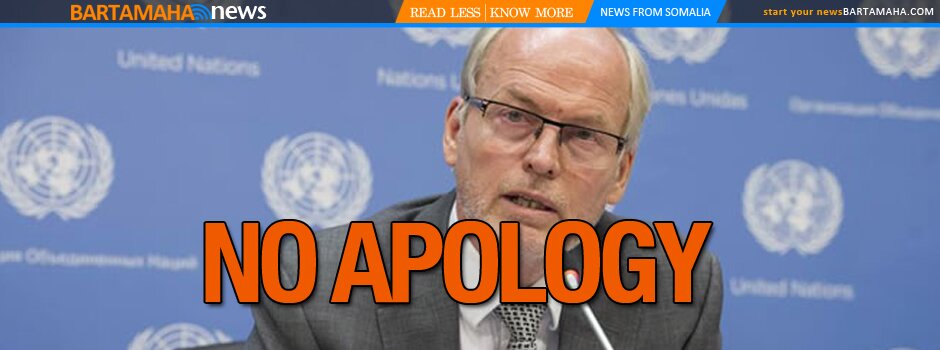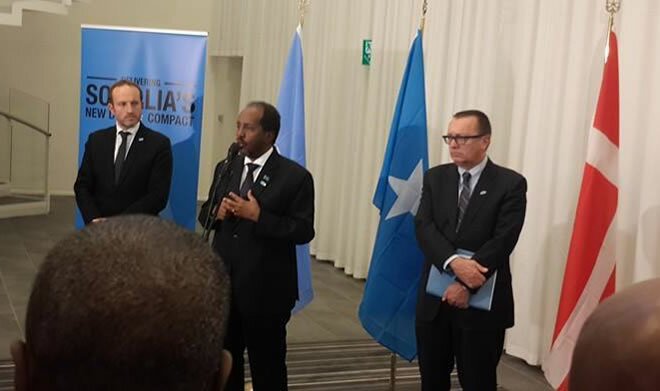Somalis live in ethnic enclaves, they are anti-individualist, they fear the outside.
 We came across this commentary and thought it might interest you.
We came across this commentary and thought it might interest you.
______________________
Georgie Anne Geyer commentary: Some cultures are too different for their people to live together
By Georgie anne geyer — The strangest thing about our “now-you-see-it, now-you-don’t” relationship with Somalia, that ungoverned space on the Horn of Africa, is why we have any relationship at all.
I spent a week there on a U.S. Information Agency speaking tour in 1980. That was the country’s “Age of Pericles,” and it was pretty awful then.
For the moment, the Soviets had “won” their fight with us to gain control over the most irrelevant places on the globe, and they had built sports stadiums and government buildings all over Mogadishu. It was a miserably poor place, although the tall, dignified people still had hope — they had not yet descended into the unspeakable anarchy they endure today. In the endlessly dusty streets, the only shining things were the ivory tusks, and they were a cruel reminder of how destructive Africans are to their environment.
We had no historic ties or commitments to Somalia whatsoever. Our cultures could not be more different, and our people did not mix well with their stratified tribal composition. Still, we kept intervening, especially in 1991, when President George H.W. Bush sent troops to Somalia so he wouldn’t have to send them to the far more dangerous (he thought) Bosnia.
Today the Soviets are long gone, and we have been in and out of Somalia, our attention still caught by the massacre of U.S. soldiers in Mogadishu in 1993. We left after that, supposedly forever, but nothing is forever in foolish foreign policy. The charitable gene in America’s character insisted upon bringing thousands of Somali refugees to America, great numbers of them (at least 32,000 — some say many more) to the Minneapolis area.
These Somalis were resettled in the U.S. largely by Christian nongovernmental organizations that were paid by international organizations for their work. And while many of them settled in their own ghettos, even the young men who were “doing well” in America continued to be restless and feel out of place in their new homeland. How out of place they felt has been bitterly revealed in this past year.
At least 20 young men from the Somali immigrant group in Minneapolis have sneaked back to Somalia, one by one to avoid attention, to join and fight with the al-Shabab, the local equivalent of the supremely anti-American al-Qaida. One of these young men has provided the country that gave him protection and succor with the distinction of becoming the “first American suicide bomber,” and many of the 20 have been killed.
The situation has grown so serious that the imams in the Minneapolis community are trying to take retroactive action so no more young men will answer the call to jihad, and the FBI now is deeply involved. But when experts try to analyze why these boys are sneaking back to the country their families desperately escaped from, the reasons are curious — and by far the most important part of this sad story.
The reasons the specialists give are two: (1) despite the appearance of assimilation, there were always cultural problems; they didn’t fit in, and (2) joining the Islamic revolt in Somalia, the true “homeland,” was seen as exciting and adventuresome, as the final sacrifice to one’s nation because when they left for Somalia, over a year ago, Christian Ethiopia was attacking Somalia. Thus, they saw their cause as a nationalist one, and indirectly anti-American, for the U.S. was supporting Christian Ethiopia against the radical Islamists in Somalia.
But there is a bigger picture. It revolves around what groups in the underdeveloped world should be taken in by the developed world — what cultures are amenable to ours and assimilable. To put it baldly but truly, which refugees will prove worth the whole process?
The West, especially the United States, has been profligate in playing out its dream that all peoples are essentially alike. They are not. They emerge out of their own histories, their loves and hatreds, and social and cultural DNAs. These differences should be respected, not played with at our expense.
No people is more different from Americans than Somalis. They live in ethnic enclaves, they are anti-individualist, they fear the outside. One could go on forever.
The message and moral here go far beyond the immediate story of these 20 (and probably, by now, innumerably more) confused young men who will never be able to come back to this “home” again. It is the truth, unpalatable to many good-willed Americans, that we cannot and should not attempt to engage and assimilate people from non-amenable cultures, particularly in an age of radical Islam.
Secretary of State Hillary Clinton made this clear on her recent tour of Africa when she said in Kenya: “The threat by al-Shabab reaches far beyond the borders. It wants to control Somalia and use it as a base to attack other countries.” It wants, she said, “to gain a haven inside Somalia to be a threat to the U.S.”
These young Somalis — poor and inexperienced young saps, really, looking for adventure — are now on the FBI books as anti-American terrorists, and their country of origin is in such chaos there never will be space for them there. Their course gives new meaning to the old saying that “you can’t go home again.”
Georgie Anne Geyer writes for Universal Press Syndicate.
_________________
Source: Columbus Dispatch
Comments
comments
 Calendar
Calendar






































